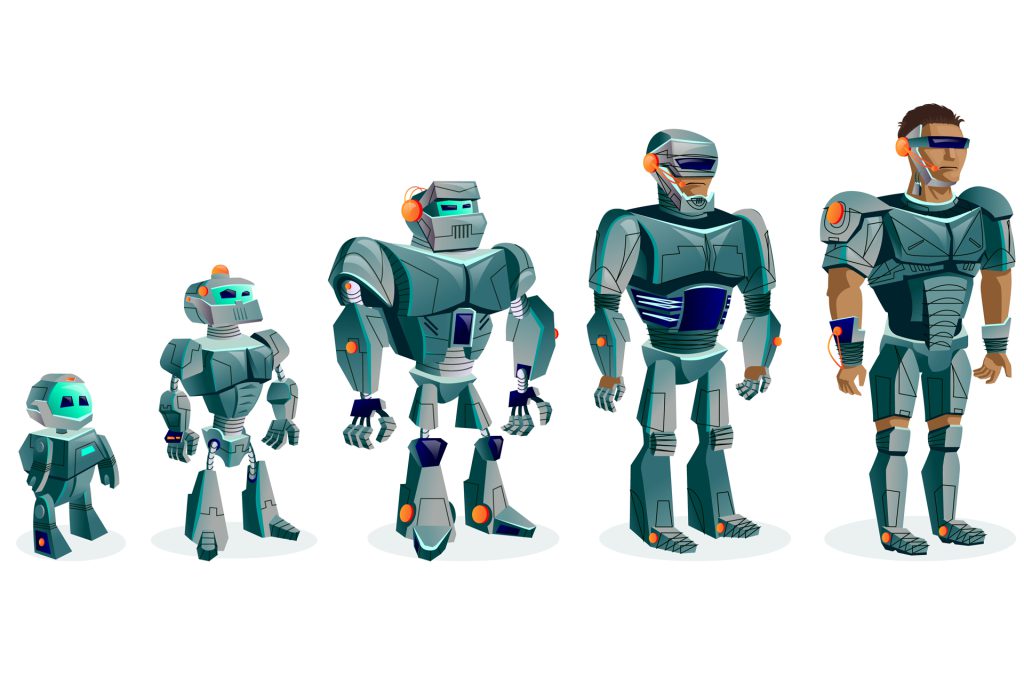Image by upklyak on Freepik
Explanation of what AI is and its current capabilities
Artificial intelligence, or AI, is a wide phrase that describes the creation of computer systems that are capable of carrying out activities that would ordinarily need human intellect, such as interpreting natural language, speech recognition, and decision-making. AI has advanced significantly in recent years thanks to developments in machine learning, natural language processing, and computer vision that have made it possible to build intelligent systems that can carry out a variety of tasks more accurately and effectively.
Though significant developments have been made, AI is still a long way from being genuinely human-like. While AI is quite accurate at doing some tasks, it is not yet able to comprehend and react to human emotions, intentions, and context in a way that seems natural and intuitive. This is a significant flaw in existing AI systems since it makes it challenging for people to connect with and have faith in them.
The importance of making AI more human
One cannot exaggerate the significance of giving AI a more human face. We must be able to communicate with AI in a way that seems natural and intuitive as technology is increasingly incorporated into our daily lives. This is crucial in fields where human-AI interactions may directly affect people’s quality of life and well-being, such as healthcare, customer service, and education. We can design systems that are not only more effective but also more sympathetic and aware of human needs by giving AI a more human touch.
The current state of AI
Rapid improvements in computer vision, natural language processing, and machine learning best describe the state of AI today. These technologies have made it possible to create intelligent systems that are capable of a variety of activities, including speech and picture recognition, decision-making, and language translation.
Explanation of current AI technologies and their limitations
Nevertheless, despite these developments, AI is still unable to comprehend human emotions, intentions, and context in a way that seems natural and intuitive. Making AI more human is difficult since present AI systems are built on statistical algorithms that cannot completely comprehend the subtleties of human language and behavior. Current AI systems, for instance, could be able to identify speech but not necessarily comprehend the emotional intent underlying a stated word. Similar to human decision-making, present AI systems are unable to comprehend the moral and ethical ramifications of their actions.
The challenges of making AI more human
AI systems are frequently educated on vast amounts of data, but this data may not be reflective of the varied range of human experiences and opinions, which presents another difficulty in making AI more human. This may result in AI systems that are prejudiced and unable to fully comprehend the breadth of human behavior.
Additionally, developing AI systems that resemble humans creates social and ethical issues. There are concerns regarding how AI may be utilized, who is accountable for its activities, and how to guarantee that it is consistent with human values as it grows more sophisticated and incorporated into our daily lives.
Overall, the current level of AI is characterized by notable technological achievements, but also by notable constraints and difficulties in developing completely human-like AI systems.
Strategies for making AI more human
To make AI more human-like, there are a number of techniques that may be applied, including:
- The application of machine learning and natural language processing (NLP) to enhance AI’s comprehension and interaction with human language. NLP is an area of AI that focuses on how computers and human language interact. AI systems may be taught to comprehend the meaning behind human language by employing NLP and machine learning techniques, which enables them to reply in a more logical and intuitive manner. This can be especially helpful in fields like customer service, where interactions between humans and AI frequently rely on natural language.
- The application of emotional intelligence and empathy to increase human-computer interaction. The capacity to identify, comprehend, and control one’s own emotions as well as those of others is known as emotional intelligence. AI systems may be made more human-like by putting emotional intelligence into them since they will be able to recognize and react to human emotions in a more organic manner. This can be especially helpful in fields like healthcare, where interactions between humans and AI can directly affect people’s quality of life and general well-being.
- The use of virtual assistants and avatars with human features facilitates interactions between humans and AI. Virtual agents and avatars are computer-generated representations of individuals that allow for more intuitive and natural interactions with other people. The experience of interacting with AI systems may be enhanced by utilizing avatars and virtual agents to make AI systems more human-like. This can be especially helpful in fields like customer service, where interactions between humans and AI frequently rely on virtual interactions.
Overall, by enhancing AI’s capacity to comprehend and react to human language, emotions, and context and by giving the AI a more human-like representation, these tactics may be utilized to make AI more like humans.
Real-world examples of more human AI
Many businesses and organizations have successfully deployed more human-like AI in the real world. Here are a few illustrations:
- A language model trained on a vast quantity of data is called OpenAI’s GPT-3. It has been used to develop chatbots, language translation tools, and other natural language processing software because it can produce writing that resembles that of a human being. It is frequently applied in conversational AI to deliver more believable replies.
- The emotion AI startup Affectiva has created technology that can interpret facial expressions and speech tones in order to comprehend human emotions. To enhance interactions between humans and AI, this technology has been applied in sectors including healthcare and customer service.
- Replika is a firm that develops customized chatbots with AI. The discussion is intended to be more like one with a human, and the chatbot is supposed to learn more about the user over time. People who want to chat with someone but don’t want to talk to a real person have utilized it as a companion.
Just a few instances of businesses and organizations that have effectively incorporated more human AI are provided below. More human-like AI has the potential to be very advantageous, particularly in sectors like healthcare, customer service, and education. By offering more individualized and precise diagnoses and treatment regimens, more human AI in the healthcare industry can contribute to better patient outcomes. By delivering more intuitive and natural interactions, more human-like AI in customer service may contribute to enhancing the customer experience. By offering more individualized and adaptable learning experiences, more human AI in education can assist to enhance student learning results.
By enabling more natural, intuitive, and tailored interactions between humans and machines, more human AI has the potential to positively affect a wide range of businesses.
The Future of AI
It is probable that AI will eventually become even more human-like as technology develops. The following are some AI future predictions:
- AI will be able to comprehend and react to human language in progressively more natural and intuitive ways thanks to the development of more sophisticated natural language processing (NLP) and machine learning techniques.
- Emotion AI will advance further, enabling AI to comprehend and react to human emotions in more subtle and precise ways.
- More people will utilize avatars and virtual agents, which will enable AI to communicate with people in more human-like ways.
- The development of general AI would enable AI to carry out activities that at the moment call for human intellect, such as problem-solving, judgment, and experience-based learning.
There are, however, ethical issues to think about as AI gets more human-like. Potential societal repercussions of more advanced AI include:
- Job displacement: Job displacement: As AI develops the ability to perform activities that now need human intellect, it may result in the loss of jobs in various sectors of the economy.
- Privacy concerns: As AI improves at comprehending and forecasting human behavior, there may be worries about how this knowledge may be used and abused.
- Bias: The biases contained in the data that AI systems are trained on might be sustained and even amplified, resulting in unfair and detrimental results.
- Dependence: As AI is more thoroughly incorporated into our daily lives, we may grow more reliant on it and less able to operate without it.
As AI develops, it is crucial to think about the moral ramifications of this technology and to make sure that its advancement is consistent with societal values and goals. To create rules and laws for the creation and application of AI, researchers, decision-makers, and other stakeholders may need to work together.
Conclusion
In conclusion, a key objective that may be accomplished is making AI more human. This can be done by utilizing NLP, machine learning, emotional intelligence, and human-like avatars and virtual agents. The advantages and effects that more human AI can have in a variety of areas, including healthcare, customer service, and education, have already been proved by real-world examples including OpenAI’s GPT-3, Affectiva, and Replika.
As AI develops, it is crucial to think about the moral ramifications of this technology and to make sure that its advancement is consistent with societal values and goals. To enhance the human-AI engagement experience and to maintain their competitiveness in the quickly evolving technological environment of today, businesses and organizations should think about integrating more human AI into their operations.
In conclusion, improving AI can benefit a variety of businesses by enabling more innate, individualized, and natural interactions between people and technology. To remain competitive in the fast-shifting technological landscape of today’s economy, businesses and organizations should think about integrating more human AI into their operations. I urge you to investigate the possible advantages of more human AI for your company and to take the required actions to put it into practice.





